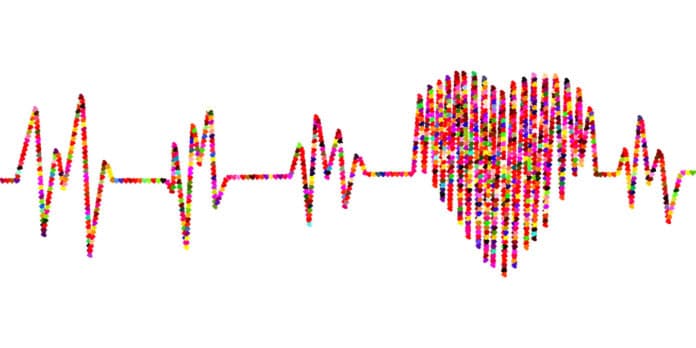Atrial fibrillation (also called AFib or AF) is a quivering or irregular heartbeat (arrhythmia) that can lead to blood clots, stroke, heart failure, and other heart-related complications.
Currently, electrocardiogram (ECG) is used to diagnose AF. But, this technology can only be used in an episode, so complementary means of diagnosis are needed.
Now, scientists at the University College London have developed a new quantum technology that can successfully image the conductivity of solutions mimicking biological tissues and, therefore, could be used to diagnose AF and identify areas of the heart where surgery should be targeted.
The technology will work by mapping the electrical conductivity of the heart in 2D to identifying anomalies where the heart is misfiring.
Corresponding author, Dr. Luca Marmugi (UCL Physics & Astronomy and UCLQ), said: “Atrial fibrillation is a serious condition that surprisingly little is known about it. We hope to change this through our work with clinicians in terms of both diagnosis and treatment.”
“Surgery to treat atrial fibrillation effectively cuts the wires to prevent a short circuit in the heart, resetting the irregular heartbeat to a normal one, and our technology would help to identify where the short circuit is. While not available in the clinic yet, we’ve shown, for the first time, that it is possible to map the conductivity of live tissues in small volumes to an unprecedented level of sensitivity and at room temperature.”
Scientists imaged solutions with a conductivity equivalent to that of live tissues down to a sensitivity of 0.9 Siemens per meter and a resolution of 1 cm using an unshielded atomic magnetometer with an AC magnetic force. These solutions were 5 ml in volume each to match the expected need for applications in AF diagnoses.
Rubidium-based quantum sensors were used to detect the signals to image small volumes accurately and consistently over several days, with areas of brightness indicating high conductivity.
The technology is capable of detecting conductivity at less than one Siemens per meter is an improvement of 50 times on previous imaging results and demonstrates that the technique is sensitive and stable enough to be used to image biological tissues in an unshielded environment.
Co-author and group leader, Professor Ferruccio Renzoni (UCL Physics & Astronomy), said: “Electromagnetic induction imaging has been successfully used in a range of practical uses such as non-destructive evaluation, material characterization, and security screening, but this is the first time that it’s been shown to be useful for biomedical imaging. We think it will be safe to use as it would expose organs, such as the heart, to one-billionth the magnetic field commonly used in MRI scanners.”
“We’ve achieved an extraordinary level of sensitivity in an unshielded, room-temperature environment, which brings us a lot closer to bringing this technology to the clinic. It was only possible by using quantum technologies, and we are excited about the potential applications for improving clinical outcomes of atrial fibrillation.”
The team envisions an array of their quantum sensors that can be placed over the heart, giving readings in a matter of seconds.
Journal Reference:
- Sub-Sm–1 electromagnetic induction imaging with an unshielded atomic magnetometer. DOI: 10.1063/5.0002146
